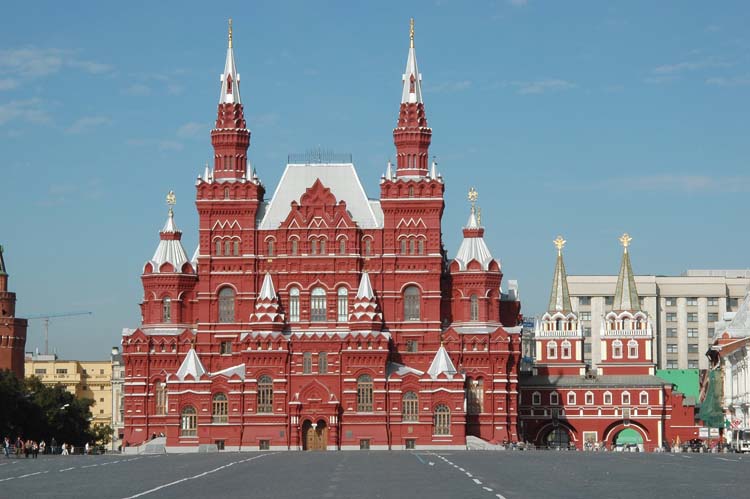The State Historical Museum (Gosudarstvennyi istoricheskii muzei) in Moscow, located on the opposite end of Red Square from St. Basilís Cathedral, lives in the latterís shadow for most visitors to the Russian capital. Yet it has a strikingly broad and deep collection of exhibits ranging across the millennia and Eurasian history, in addition to its focus on Russian history and culture. The manuscript collections of the Museum are amongst the most important ones in the world for the study of early Russian culture. Its red brick building, designed in 1874 by Vladimir Shervud, is an excellent example of Russian revival style, incorporating motifs from Muscovite architecture.


Unfortunately, the museum and its website are not yet user-friendly for those who know no Russian; and even for those who do, the captioning of exhibits is far too general. The website lets one see images of display cases in many of the rooms, but little detail of what is in them. For certain exhibits (for example, the remarkable collection of early Russian portraiture), reflections hinder serious examination and photography. The exhibits on the second floor that start with Russia of the 18th century are generally better lighted than those for the early periods on the first floor.
Our collection of images emphasizes early Eurasian pastoralist cultures and the objects they obtained from other regions. There is also a somewhat random selection of material on pre-modern Russia, broadly defined. Material is loosely grouped under approximate subheadings. To a considerable degree selection was dictated by what could reasonably be photographed given the challenges of inadequate lighting. Captioning is bare-bones, but, as time permits, will be improved with reference to publications of objects. With the exception of a few images from books, all the photographs are by Daniel Waugh and were taken in 2005 and 2006.